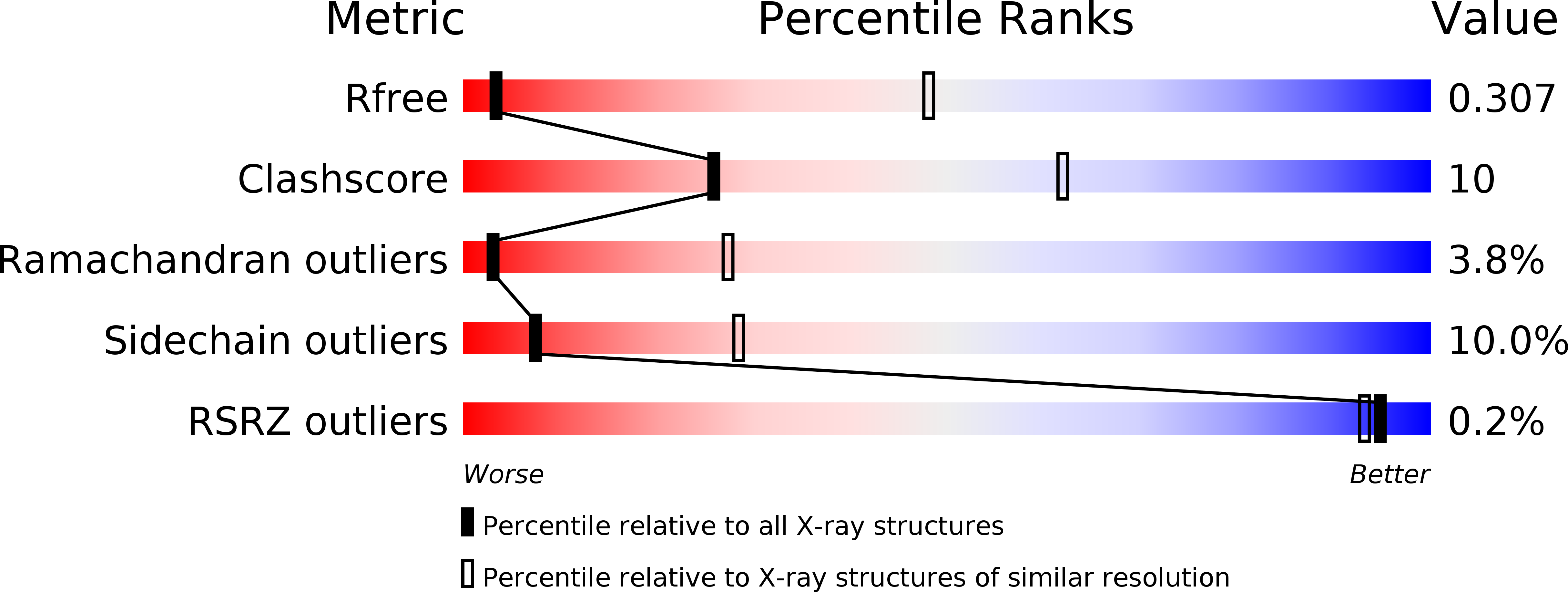
Deposition Date
2014-11-26
Release Date
2015-02-04
Last Version Date
2023-09-27
Entry Detail
PDB ID:
4X2S
Keywords:
Title:
Crystal structure of 276S/M395R-GltPh in inward-facing conformation
Biological Source:
Source Organism:
Pyrococcus horikoshii OT3 (Taxon ID: 70601)
Host Organism:
Method Details:
Experimental Method:
Resolution:
4.21 Å
R-Value Free:
0.31
R-Value Work:
0.27
R-Value Observed:
0.27
Space Group:
P 65 2 2


